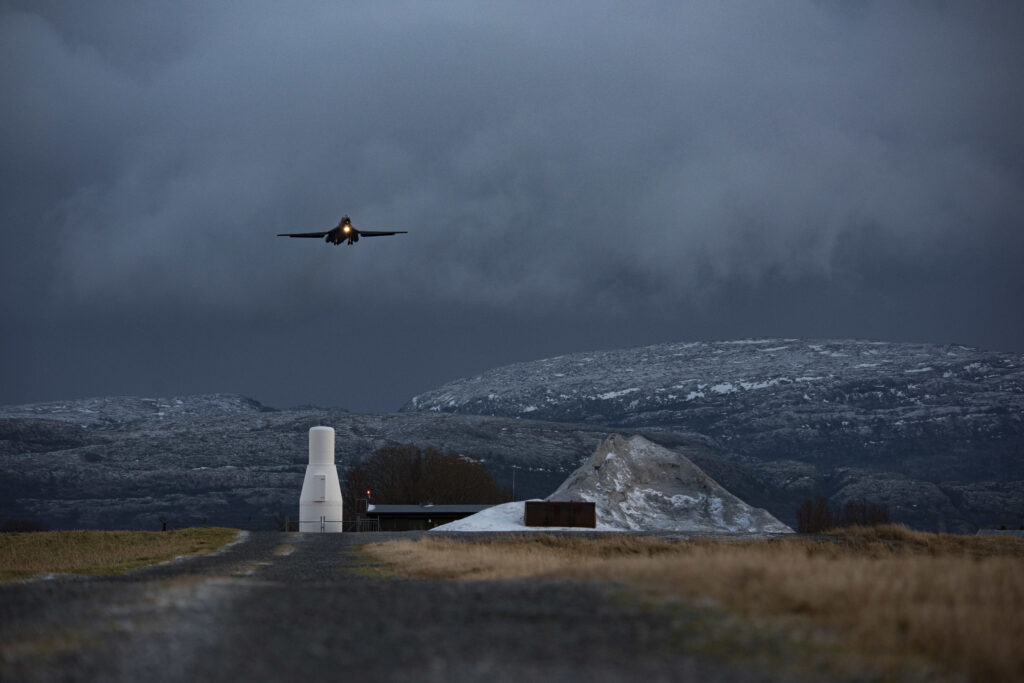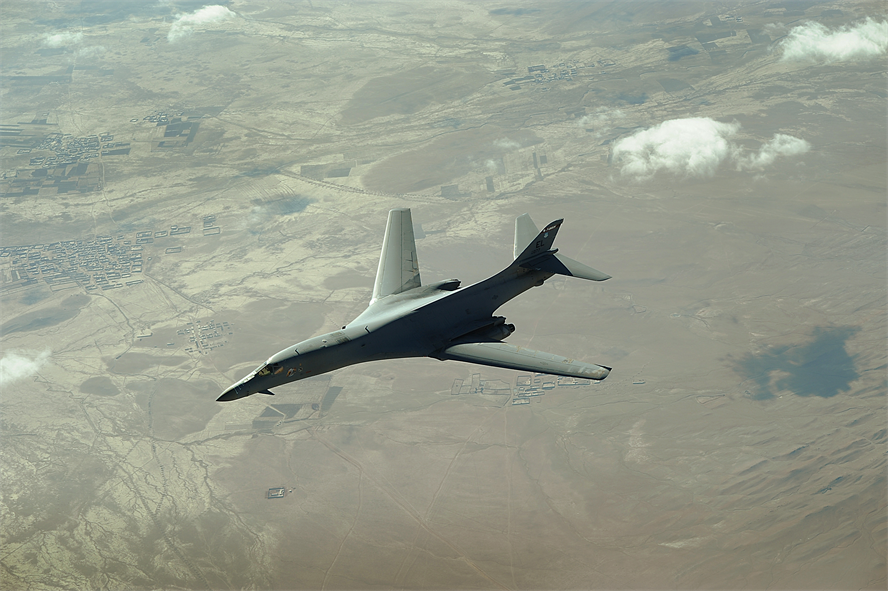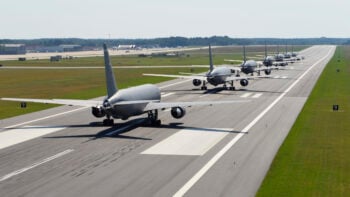
A B-1B Lancer lands at Ørland Air Force Station, Norway, March 3, 2021
WASHINGTON: A top Norwegian general insists that basing two US B-1B bombers in Norway isn’t meant as a threat to Russia. Instead, he argued, the new basing agreement at the country’s main F-35 base is simply a new opportunity to train in the Arctic.
“We are not going into a new Cold War,” Lt. Gen. Yngve Odlo, Chief of the Norwegian Joint Headquarters told reporters this morning, adding that Oslo has long operated in the High North close to the Russian border, and both sides have well-understood rules of the road for staying clear of one another.
The deployment of the two bombers to Orland Main Air Station about 350 miles north of Oslo comes as the US military looks for more ways to operate in the Arctic, particularly relearning how to fly and sail in extreme cold, something it has done very little of since the fall of the Soviet Union.

B-1 bomber over Afghanistan
In a major move, in September Oslo acknowledged it had made improvements to port facilities at Tromso, about 190 miles above the Arctic Circle, to clear the way for increased visits by US nuclear submarines, providing a major new jumping off point for watching Russia’s active Northern Fleet as it transits into the North Atlantic.
Twice over the past year, the US Navy has made public displays of its submarines docking in Norway, sending a clear signal to Russia about the American presence in the region and providing a rare glimpse into the secretive world or undersea deployments. The visits were brief, and mostly for effect, but the upgraded facilities will allow American and NATO submarines to pull into the port and replenish, allowing for longer deployments to the critical Arctic region.
While the submarines will come, the bombers have already been busy.
Late last month, the B-1s flew their first Bomber Task Force mission over the Norwegian Sea alongside several Norwegian F-35s. But US military officials say the training is the point, and isn’t meant as a warning to Moscow.
“There should be no message of a threat,” Gen. Steven Basham, deputy commander of Air Forces in Europe/Africa, added on the call. “This is how professional militaries increase their level of expertise, their level of capability, and ultimately for the United States, this is one more opportunity for us to be able to operate… in an environment that maybe we’ve not been before.”
Norway has been quick to integrate their growing fleet of F-35s into NATO exercises and bilateral operations with the US. Eventually, the country will operate 52 F-35As based out of Orland and Evenes air bases, which will one day be joined by five of P-8 surveillance aircraft ordered in 2017, giving the country a much-needed boost in its ability to hunt and track Russian submarines. The planes will also be capable of assisting in search and rescue missions in the Arctic, as melting sea ice opens new shipping routes.
In 2019, Norway became just the third European country to declare the plane operational, after the UK and Italy.
The US has been flying the Lancers over Europe for some time, most recently on March 3 when they joined with fighters from Germany and Italy to fly over the Baltic states of Estonia, Latvia and Lithuania.
In May 2020, Lancers operated with English, Swedish, Dutch and Norwegian aircraft for a series of exercises that included the bomber’s first flight over Sweden. Then in September, two Lancers flew over the North Pole to Greenland.
The Norwegians have long been clear-eyed about their position as Russia’s neighbor, particularly being hard up against the Kola Peninsula, home to Russia’s powerful Northern Fleet, which operates Moscow’s most advanced submarines and surface vessels.
The High North could soon see even more advanced fighter aircraft. In October, Finland took a step toward making a decision on its highly-anticipated fighter plane buy, officially adding the F-35 and F/A-18 to its list of European-made options.
The State Department sent Congress a notification that the country is considering acquiring 64 F-35s with a price tag of $12.5 billion, or 72 single and double seated F/A-18s, including Growlers, for $14.7 billion. The American aircraft are not alone in the competition. They also face France’s Dassault Rafale, the UK’s Eurofighter Typhoon and the Swedish Saab Gripen.
While Basham insisted that the bombers’ deployment isn’t meant to threaten Moscow, he also underscored the increasing American range in the region. “I guess if someone were to take a message [from the basing agreement], it’s that we’re not restricted to one particular location. That would be a good message for them to perceive.”
Army inching towards late FY25 Chinook Block II full-rate production contract
Boeing recently announced the Block II helo’s first maiden flight and plans to deliver the first production aircraft to the service in the coming weeks.


























